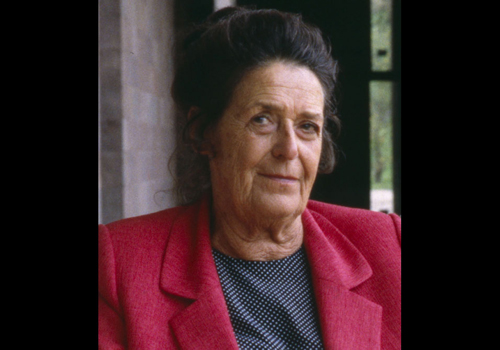 Swiss Art Collector and Founder of Beyeler Foundation Hildy Beyeler Died at Age 86
Swiss Art Collector and Founder of Beyeler Foundation Hildy Beyeler Died at Age 86
BASEL.- Hildy Beyeler, wife of Ernst Beyeler, both of whom built one of Switzerland's biggest art collections, has died. She was 86. The news was confirmed through a telephone conversation ArtDaily had with Catherine Schott who is in charge of art media relations for the Beyeler Foundation.
Hildy and Ernst Beyeler’s collection of around 200 works by 40 artists provides an extensive overview of classic modern art. Starting with late and Post-Impressionist works by Paul Cézanne, Vincent van Gogh and Claude Monet, it continues via Cubism with Pablo Picasso and Georges Braque to other characteristic groups of works by Joan Miró, Piet Mondrian, Vasily Kandinsky, Henri Matisse, Paul Klee and Pablo Picasso. American Expressionism is represented by artists like Mark Rothko and Barnett Newman. The collection’s time-frame ends with works by Georg Baselitz, Anselm Kiefer and Luciano Fabro. A number of sculptures from Africa, Alaska and Oceania provide an exciting counterpoint to the works of European and American origin.
The collection was built up over more than fifty years, in parallel to the activities of the Galerie Beyeler. Early on, Hildy and Ernst Beyeler started setting aside works they could not or did not wish to sell. They held their first exhibitions at the Galerie Beyeler in the 1940s with Japanese woodcuts, drawings by Impressionist and Post-Impressionist artists, and graphic works by Toulouse-Lautrec. The gallery soon became known as a leading specialist in modern art. The Beyelers’ successful activities as art dealers, for example their purchase of Improvisation 10, which Vasily Kandinsky painted in 1910, laid the foundation stone for the present collection. Another important factor was their personal relationship with a number of artists, for example their friendship with Picasso, several of whose masterpieces can now be seen in one of the main exhibition rooms at the Fondation Beyeler. Works by Picasso and a group of works by Paul Klee are among those that determined the collection’s character from the outset.
The idea of setting up a non-profit-making foundation emerged in the 1970s, but did not at first take concrete shape. All that Hildy and Ernst Beyeler wished to do initially was to adorn their home with art and to keep some of their favourite works for themselves rather than selling them. In 1989, at the invitation of the Spanish Ministry of Culture, the previously unknown collection was publicly displayed for the first time in the Centro de Arte Reina Sofía in Madrid, where it attracted international attention. Since then, the Beyelers have extended it through carefully selected acquisitions.
The Beyeler Collection’s distinctive character derives from its concentration on a particular period. Thanks to its selectiveness and the high quality of the exhibits, it represents more than merely the subjective viewpoint of a collector, providing an impressive survey of 20th-century art.
Most of the works in the Beyeler Collection are paintings but it also includes a few sculptures. It ends with works by Baselitz, Kiefer and Fabro. Conceptual art, the second main development in modern art, and more recent trends are intentionally not represented in the permanent collection. Instead, they are dealt with in the context of temporary exhibitions designed to create a dialogue with contemporary art and to make the museum a dynamic forum for the presentation of artists’ ideas.
Another priority of the Fondation Beyeler, alongside its permanent collection, its architecture and its temporary exhibitions, is to teach visitors more about art. Private and public guided tours and viewings of individual works are organised under the “Guide Line” programme. Events involving other artistic disciplines also serve to enhance visitors’ appreciation of art. One of these is a series of talks entitled “Prominent Experts” while another is the “Special Focus” series in which actors from the Theater Basel read texts by or about selected artists in front of those artists’ works. These events, which are very popular, add a further facet to the comprehensive range of activities offered by the Fondation Beyeler.
 Swiss Art Collector and Founder of Beyeler Foundation Hildy Beyeler Died at Age 86
Swiss Art Collector and Founder of Beyeler Foundation Hildy Beyeler Died at Age 86